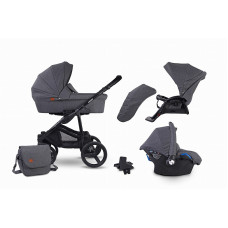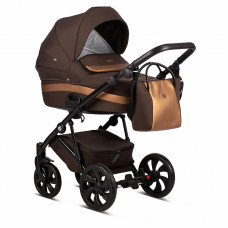How to choose the perfect pram: Tips and advice

If you live in a building with an elevator, before purchasing a stroller, measure the width at the narrowest point (between the doors) as well as the length. There have been cases where strollers purchased by parents didn't fit through the elevator doors.
You should perform the same measurements with the stroller in the store. The width of the stroller is measured from the wheels. Don't believe salespeople who claim that a particular stroller will fit in every elevator in the world—they are just trying to make a sale.
What Types of Strollers Are There?
Classic Strollers with a Bassinet
This is the most common type of stroller, suitable for children up to 8 months old, as babies primarily sleep in them. However, some more active babies may need to transition to a stroller earlier because they try to climb out of the bassinet.
"Two-in-One" Strollers
These include both a bassinet and a stroller seat option in one set.
"Three-in-One" Strollers
This set includes a bassinet, a stroller seat option, and a 0+ category car seat.
Transformer Strollers
These are strollers where the sleeping area can be converted into a sitting seat for walks.
Strollers for Walking
Designed for children who can sit up on their own.
Requirements for Strollers for Children Aged 0 to 8 Months
The stroller should be lightweight. After pregnancy and childbirth, a mother's body is weakened, so pushing a heavy stroller can be very difficult. Despite the weight indicated on the packaging by the manufacturer, the stroller might feel heavier or lighter in practice. Before purchasing, try pushing the stroller and lifting it as if you were trying to mount a curb. This will give you a better idea of how easy the stroller is to handle. Often, the stroller may seem light at first, but once the baby is inside, the mother may struggle to manage it. In the store, you can place something heavy, like a bag, inside the stroller to simulate the weight of a baby with clothes.
The stroller should be spacious. The bassinet should be wide and deep enough to comfortably accommodate a baby in winter clothing. Depth is also important—the deeper, the better.
The stroller should have large wheels to ensure better maneuverability. Small wheels make it difficult to mount curbs.
The wheels can be inflatable or standard. Inflatable wheels provide a smoother ride, but if you live in typical city conditions, the difference isn't significant. Inflatable wheels have a major downside: they can burst if they hit a sharp object, and you might need a specialist to repair them. Additionally, inflatable wheels require periodic pumping.
For safety, the stroller should have a sturdy frame. A safe frame is what lies beneath the fabric-covered structure of the stroller. It should provide good ventilation.
The material of the stroller should be durable and easy to clean. Some strollers are covered with cotton fabric, which isn't practical because it's difficult to clean. It's also worth noting that blue fabric fades in the sun more than other colors, and light-colored strollers get dirty quickly.
Adjustable handle. The handle should be adjustable in height. This is very practical because it allows any family member to comfortably use the stroller. An adjustable handle also makes the stroller more compact and easier to fit into small elevators.
It's good if the stroller has a large basket or pocket for storing items and groceries. The basket under the stroller should be sturdy and, ideally, deep. It's also very convenient if the stroller comes with a bag that attaches to the handle. If the stroller doesn't include such a bag, we recommend purchasing one.
The inner lining should be easily removable. The lining should be made of cotton fabric, or even better, knit fabric, which is easy to remove and wash. A baby would appreciate a lining with patterns to look at during walks.
If you travel a lot, choose a stroller that is easy to fold and fit into a car.
The stroller should have good suspension.
The brake system should ideally be unified, not separate for each wheel, and located between the wheels.
Which Is Better to Choose: a Bassinet, "Two-in-One," or Transformer?
This is a question that almost all parents ask themselves. Of course, you will have your own opinion.
Many mothers prefer the "bassinet" option.
The first impression is that the "Two-in-One" is a good economical option, but in practice, they turn out to be inconvenient. The stroller seat is placed high, making it difficult for the child to climb in on their own. These strollers are much heavier and less maneuverable than regular strollers designed for walking. It's also harder to monitor a growing child, increasing the risk of the child falling out. There have been cases where children have fallen out and seriously injured themselves due to the high seating position. That's why owners of "Two-in-One" strollers often end up buying a regular stroller afterward.
As for "Transformer" strollers, they are heavier, the bassinet lacks firm sides, allowing the wind to blow through, and parents often have to buy an additional stroller for walking. Thus, the expenses for a Transformer stroller do not justify themselves. These strollers require a bassinet insert for winter, but once the insert is added, there's very little room left for the child.
Three-Wheeled Strollers
Three-wheeled strollers are designed for those who love something unusual or extravagant.
They aren't as practical as traditional models but attract attention.
Three-Wheeled Strollers Can Be:
- Universal – a bassinet, stroller seat, or car seat can be attached to the frame as needed.
- Transformers – suitable for children from 0 to 3 years old.
- Walking Strollers – with an adjustable backrest.
Consider the Following When Choosing a Three-Wheeled Stroller:
- The stroller might move sideways. Strollers with a fixed front wheel lack maneuverability, although they are relatively cheap.
- It's better to choose a stroller with a swiveling front wheel. If needed, the wheel can be locked or left free to rotate.
- All three-wheeled strollers have a handbrake on the handle. In some models, it locks not only the front wheel but also the rear wheels. In cheaper models, this feature is more decorative than functional.
What Are the Disadvantages of Three-Wheeled Strollers?
- These strollers are unstable. For example, when mounting a curb, the stroller might momentarily balance on one wheel, increasing the likelihood of tipping over. The risk is greater if the front wheel is free to rotate and not locked.
- Many of these strollers are designed for young and physically strong parents. Older generations might find it difficult to maneuver such strollers.
- Some models struggle in the snow.
What Requirements Should Walking Strollers Meet?
The Main Requirements for Walking Strollers:
- The stroller should not be too small. Walking strollers don't usually have large wheels. Make sure the wheels aren't too small and unstable. If the roads in your area are in poor condition, opt for models with larger wheels.
- Swiveling wheels are very convenient. Swiveling wheels make the stroller light and mobile, but they are only suitable for smooth, paved roads. If you live in a rural area with uneven roads, these wheels won't work for you.
- Reversible handle. It's great if the handle can be reversed so the child can see the parent's face while riding. This is useful for keeping the child within sight. Unfortunately, strollers with a reversible handle don't have swiveling wheels.
- It's good if the stroller can be reclined to a horizontal position. In strollers that don't recline to a horizontal position, it's difficult for the child to sleep, which is also harmful to the child's spine.
- The stroller's fabric should be easy to care for. The fabric in a walking stroller is just as important as in a regular stroller because the child is older and often climbs into the stroller on their own.
- Essential features: safety bar and armrests. Strollers without a safety bar are dangerous because the child can fall out. In practice, parents often don't use the safety belts provided in all models, and children don't like them either.
- The choice of points 1, 2, 7, and 9 is just as important for regular strollers as it is for walking strollers.
Some parents prefer walking strollers with large (tractor) wheels. These are expensive models, comfortable for use in snow and on rough roads.
However, keep in mind that some of these models won't fit in small elevators, won't fit in the trunk of a car, and are quite heavy.
Strollers for Twins
This information may interest parents expecting twins, as well as those with children close in age.
Double strollers have the same requirements as regular strollers.
Option where children sit side by side, parallel to each other.
According to psychologists, this model is good because both children are equally close to their mother. This cannot be said about strollers where the seats are arranged one behind the other. Parents of twins note that as children grow older, they may start to bother each other and disrupt sleep. This can be avoided by purchasing a stroller with seats arranged one behind the other.
There are strollers with a single shared bassinet for two children and strollers with two connected bassinets. We recommend the second option because each bassinet can be adjusted individually according to each child's needs.
Tandem Strollers: The children's seats are arranged one behind the other.
These strollers are narrow and maneuverable, but the child sitting in the back has almost no view. If you purchase such a stroller, it is advisable to periodically swap the children to prevent any issues.
It should be noted that in these models, it can be challenging to recline the front seat to a horizontal position. Parents also note that children in such strollers often fall asleep at different times—while the child in the front can explore the surroundings, the child in the back has little to see and therefore falls asleep faster. The different nap times can be inconvenient for parents.
Travel Strollers
This section may interest parents who travel frequently with young children.
There are models called "travel systems," where a car seat can be attached to the frame (instead of a bassinet). Thus, when traveling, you can use only the car seat instead of a bassinet. This option is convenient, for example, when visiting a clinic.
Car seats are often sold separately, so when purchasing a stroller, consult with the seller to ensure compatibility with your chosen stroller.
Stroller Accessories
When purchasing a stroller, be sure to consider additional accessories.
Rain Cover: You'll definitely need a rain cover. Some models come with a rain cover included.
It's preferable to purchase a rain cover made of silicone, as it won't tear like regular plastic and won't freeze in cold weather.
Mosquito Net: Very useful during the summer to protect against mosquitoes.
Bag for the Handle: If the stroller doesn't come with a handle bag, be sure to buy one separately. The bag can hold everything your baby needs. It's best if the bag has a washable lining.
Woolen Sleeping Bag (Footmuff) Stroller Toys Sunshade/Umbrella
This is a comprehensive guide to selecting and accessorizing a stroller to meet your child's needs and ensure their comfort and safety.
 Baby care kits
Baby care kits Baby combs
Baby combs Baby toilet seats
Baby toilet seats Baby towels
Baby towels Bath inserts and seats
Bath inserts and seats Bath stands
Bath stands Bath thermometers
Bath thermometers Bath toys
Bath toys Bathroom toy holders (organizers)
Bathroom toy holders (organizers) Changing surfaces
Changing surfaces Children`s bathrobes
Children`s bathrobes Ear buds
Ear buds High chair
High chair Nasal aspirators
Nasal aspirators Non-slip bath mats
Non-slip bath mats Potties
Potties Shampoo protection
Shampoo protection Sheets for changing surface
Sheets for changing surface Sponges
Sponges Baby`s bathtubs
Baby`s bathtubs Baby changing table
Baby changing table Baby linen
Baby linen Baby scales
Baby scales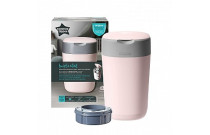 Diaper accessories
Diaper accessories Diapers
Diapers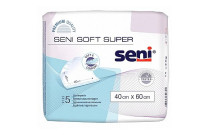 Disposable diapers
Disposable diapers Napkins
Napkins Reusable nappies
Reusable nappies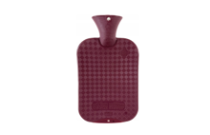 Thermophores, Heaters
Thermophores, Heaters Accessories for baby carriers and slings
Accessories for baby carriers and slings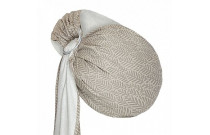 Shoulder-cloths
Shoulder-cloths Baby carriers
Baby carriers Babygro
Babygro Babygrow with long sleeves
Babygrow with long sleeves Babygrow with short sleeves
Babygrow with short sleeves Children's clothing
Children's clothing Children`s jackets
Children`s jackets Children`s swimming trunks and swimwear
Children`s swimming trunks and swimwear Children`s tights
Children`s tights Children`s tracksuits
Children`s tracksuits Children`s underwear
Children`s underwear Dresses, sundresses, skirts for girls
Dresses, sundresses, skirts for girls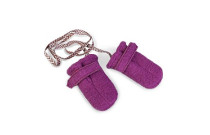 Gloves, mittens
Gloves, mittens Handkerchiefs, scarves
Handkerchiefs, scarves Hats
Hats Hats for children
Hats for children Kits for newborns
Kits for newborns Mittens for newborns
Mittens for newborns Pajamas
Pajamas Pants
Pants Slippers, shoes for children
Slippers, shoes for children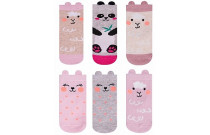 Socks for children
Socks for children Suites (creepers with blouse)
Suites (creepers with blouse) Suites (pants with blouse)
Suites (pants with blouse) Suites (shorts with a shirt)
Suites (shorts with a shirt) Summer onesies
Summer onesies Bathroom accessories
Bathroom accessories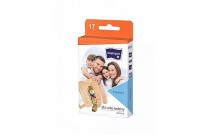 Children`s Plasters
Children`s Plasters Cosmetics for girls
Cosmetics for girls Electric toothbrushes, accessories
Electric toothbrushes, accessories Face care
Face care Hair styling and straightening appliances
Hair styling and straightening appliances Irrigators
Irrigators Joint orthoses and bandages
Joint orthoses and bandages Manicure and pedicure accessories
Manicure and pedicure accessories Massage accesories
Massage accesories Products for baby hygiene
Products for baby hygiene Shavers, trimmers for men
Shavers, trimmers for men Skin care products
Skin care products Sunscreen cosmetics
Sunscreen cosmetics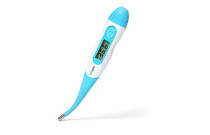 Thermometers
Thermometers Toothpastes and brushes for children
Toothpastes and brushes for children Trimmers, epilators for women
Trimmers, epilators for women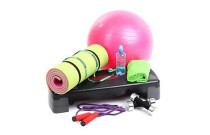 Sports and fitness
Sports and fitness Accessories for car seats
Accessories for car seats Adapters
Adapters Base for car seats
Base for car seats Car seat inserts and covers
Car seat inserts and covers Car sunshade
Car sunshade Head cushion
Head cushion Protective mats for car seats, car mirrors
Protective mats for car seats, car mirrors Car seats (booster) 15-36kg
Car seats (booster) 15-36kg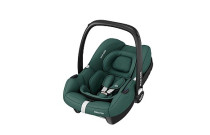 Auto carry 0-13kg
Auto carry 0-13kg Car seats 0-18kg
Car seats 0-18kg Car seats 15-36kg
Car seats 15-36kg Car seats 9-18kg
Car seats 9-18kg Car seats 9-36kg
Car seats 9-36kg Car seats 0-25kg
Car seats 0-25kg Car seats 0-36kg
Car seats 0-36kg Accessories for children's vehicles
Accessories for children's vehicles Bicycles without pedals/runbikes
Bicycles without pedals/runbikes Push stand-up scooters
Push stand-up scooters Rollers
Rollers Skateboards
Skateboards Skis
Skis SUP boards
SUP boards Three-wheelers
Three-wheelers Push cars
Push cars Babywalker
Babywalker Child bike seats
Child bike seats Sledge
Sledge Children`s pedal cars
Children`s pedal cars Electromobiles
Electromobiles Two-wheelers
Two-wheelers Baby protection accessories
Baby protection accessories Children glasses for digital devices
Children glasses for digital devices Leash holder (reins) for children
Leash holder (reins) for children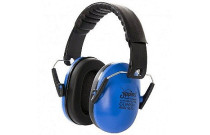 Noise-suppressing headphones for children
Noise-suppressing headphones for children Protective helmets
Protective helmets Repellents
Repellents Security systems
Security systems Babyphones and video baby monitors
Babyphones and video baby monitors Bibs, Burp cloths
Bibs, Burp cloths Bottle and teat dryers
Bottle and teat dryers Bottle washing brushes
Bottle washing brushes Children`s dishes
Children`s dishes Children`s serving pieces
Children`s serving pieces Educational cups
Educational cups Feeding bottles
Feeding bottles Formula milk
Formula milk Nibbler-strainer for feeding
Nibbler-strainer for feeding Non-slip table mats
Non-slip table mats Snack dishes
Snack dishes Soothers for bottles
Soothers for bottles Spare parts
Spare parts Thermal bags
Thermal bags Accessories for chairs
Accessories for chairs Mattresses
Mattresses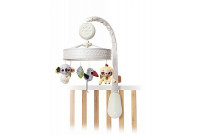 Musical merry-go-rounds
Musical merry-go-rounds Projectors, Nightlights
Projectors, Nightlights Toy boxes
Toy boxes Crib accessories
Crib accessories Soft chairs
Soft chairs Cots and cribs for travel
Cots and cribs for travel Highchairs
Highchairs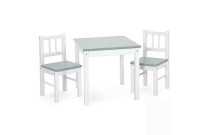 Tables and chairs
Tables and chairs Cots for infants
Cots for infants Beds for teens
Beds for teens Dressers
Dressers Wardrobes, shelves
Wardrobes, shelves Furniture sets
Furniture sets Balloons
Balloons Calendars
Calendars Candles for cake
Candles for cake Carnival Costumes for Children
Carnival Costumes for Children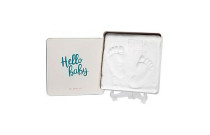 Casting kits
Casting kits Face paints
Face paints For Easter
For Easter Gift cards
Gift cards Invitation cards, postcards, bags
Invitation cards, postcards, bags Money boxes
Money boxes Pens
Pens Soap bubbles
Soap bubbles All for Christmas
All for Christmas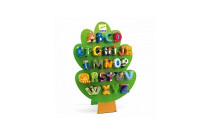 Decorative letters
Decorative letters Breast milk storage
Breast milk storage Breast pumps
Breast pumps Breastfeeding pads
Breastfeeding pads Briefs for pregnant women and mothers
Briefs for pregnant women and mothers Foundation sleeveless undershirt
Foundation sleeveless undershirt Horseshoe feeding pillows
Horseshoe feeding pillows Hygiene products for mothers
Hygiene products for mothers Nursing bras
Nursing bras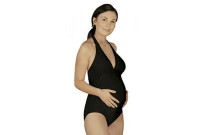 Peldkostīmi
Peldkostīmi Protective nursing pads
Protective nursing pads Support belts
Support belts Tights and Leggings for moms
Tights and Leggings for moms 2-piece bedding set
2-piece bedding set 3-piece bedding set
3-piece bedding set 4-piece bedding set
4-piece bedding set 5-piece bedding set
5-piece bedding set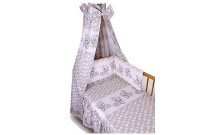 6-piece bedding set
6-piece bedding set Baby sheets
Baby sheets Bed linen for the cradle
Bed linen for the cradle Blankets
Blankets Blankets, pillows, pillowcases, covers
Blankets, pillows, pillowcases, covers Canopies for baby cribs
Canopies for baby cribs Cocoons (nests) for newborns
Cocoons (nests) for newborns Envelopes and sleeping bags for newborns
Envelopes and sleeping bags for newborns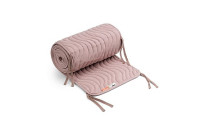 Ledges in the crib
Ledges in the crib Organizers for baby cribs
Organizers for baby cribs Auto products
Auto products Batteries
Batteries Blenders, choppers, juicers
Blenders, choppers, juicers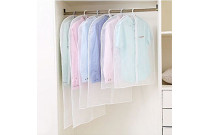 Boxes, hangers and garment bags
Boxes, hangers and garment bags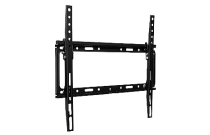 Brackets and mountings, wires
Brackets and mountings, wires Building tools
Building tools Camping and hiking
Camping and hiking Coffee machines, accessories
Coffee machines, accessories Cutting boards, kitchen scales
Cutting boards, kitchen scales Dishes, cutlery
Dishes, cutlery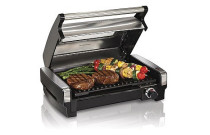 Electric grills, Toster, Waffle
Electric grills, Toster, Waffle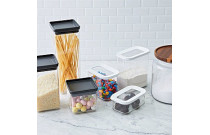 Food storage utensils
Food storage utensils Fryers
Fryers Game consoles, games
Game consoles, games Garden goods
Garden goods Heaters, sterilizers
Heaters, sterilizers Home climate control appliance
Home climate control appliance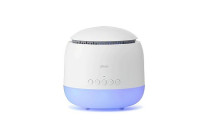 Humidifiers, aromatizers
Humidifiers, aromatizers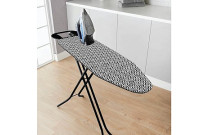 Irons, ironing boards
Irons, ironing boards Mixers, foaming units
Mixers, foaming units Mobile phones and accessories
Mobile phones and accessories Multicookers, pressure cookers
Multicookers, pressure cookers Sewing machines, accessories
Sewing machines, accessories Spatulas, Shredders, Choppers, etc
Spatulas, Shredders, Choppers, etc Special cooking appliances
Special cooking appliances Teapots
Teapots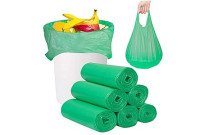 Trash bins, bags
Trash bins, bags TV, PC, Audio, Photo and video equipment
TV, PC, Audio, Photo and video equipment Vacuum cleaners
Vacuum cleaners Zoo products
Zoo products Cleaning products
Cleaning products Water filters, carbonating equipment
Water filters, carbonating equipment Chaise longues accessories
Chaise longues accessories Baby seesaw
Baby seesaw Longues
Longues Rocking horses
Rocking horses Children`s bags, backpacks
Children`s bags, backpacks Children`s suitcases Trunki
Children`s suitcases Trunki Children`s sunglasses
Children`s sunglasses Children`s tattoos
Children`s tattoos Craft sets
Craft sets Drawing kits
Drawing kits Globuss
Globuss Jewellery, watches, keychains
Jewellery, watches, keychains Magnetic and Drawing boards
Magnetic and Drawing boards Office equipment
Office equipment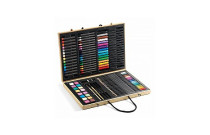 Pencils, crayons, markers
Pencils, crayons, markers Plasticine, modeling masses, kinetic sand, slimes
Plasticine, modeling masses, kinetic sand, slimes Scratchpad
Scratchpad Sets for the children`s jewelry making
Sets for the children`s jewelry making Stickers for kids
Stickers for kids Umbrellas for children
Umbrellas for children Additional accessories for baby carriages
Additional accessories for baby carriages Baby nests and sleeping bags
Baby nests and sleeping bags Bags for mothers
Bags for mothers Gloves for strollers and baby carriages (sleeves)
Gloves for strollers and baby carriages (sleeves) Inserts and foot covers
Inserts and foot covers Mosquito nets for baby carriages
Mosquito nets for baby carriages Raincoats for baby carriages
Raincoats for baby carriages Umbrellas for baby carriages and strollers
Umbrellas for baby carriages and strollers Cradles/seats
Cradles/seats Flight baby bassinets
Flight baby bassinets Strollers
Strollers Strollers for triplets 2in1
Strollers for triplets 2in1 Strollers for triplets 3in1
Strollers for triplets 3in1 Strollers transformers
Strollers transformers Strollers for twins
Strollers for twins Baby carriages 2in1
Baby carriages 2in1 Baby carriages 3in1
Baby carriages 3in1 Baby carriages for twins 2in1
Baby carriages for twins 2in1 Boxes for dummies
Boxes for dummies Dummy accessories
Dummy accessories Pacifiers
Pacifiers Teething toys
Teething toys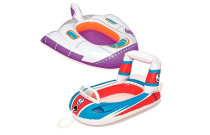 Accessories for swimming
Accessories for swimming Balls
Balls Beach toys
Beach toys Board games
Board games Children's tents and houses
Children's tents and houses Doll beds, baths, houses, etc.
Doll beds, baths, houses, etc. Dolls
Dolls Educational toys
Educational toys Hanging toys
Hanging toys Interactive toys
Interactive toys Jumping balls
Jumping balls Magic tricks
Magic tricks Mosaic for children
Mosaic for children Music boxes
Music boxes Musical instruments
Musical instruments Mystery Toys
Mystery Toys Playsets and toy figures
Playsets and toy figures Plush toys
Plush toys Pools with balls
Pools with balls Push car toys
Push car toys Puzzle 3D
Puzzle 3D Puzzles classic
Puzzles classic Puzzles for baby
Puzzles for baby Puzzles wooden
Puzzles wooden Pyramids for children
Pyramids for children Radio control toys
Radio control toys Rattle boxes
Rattle boxes Rokas lelles
Rokas lelles Sport games
Sport games Tinker toys
Tinker toys Toy rudders
Toy rudders Toy vehicles, tracks
Toy vehicles, tracks Toy weapon
Toy weapon Tummy-time mats
Tummy-time mats Wooden educational toys
Wooden educational toys Role playing sets
Role playing sets Water guns
Water guns Carriage for dolls
Carriage for dolls Children's slides and sandboxes
Children's slides and sandboxes Playgrounds
Playgrounds